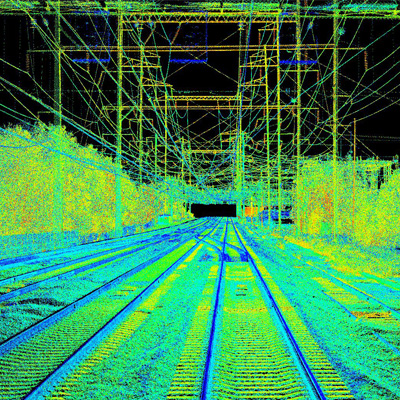AGRICULTURE & FORESTRY
Lidar has become an invaluable tool for forest and agriculture management, conservation, and research. It offers numerous advantages for studying and assessing planted areas:
Carbon Estimation: Lidar data allows for accurate estimations of carbon stocks in forests. By measuring attributes such as tree heights, trunk diameters, and canopy density, it’s possible to estimate the amount of carbon stored in the trees, which is essential for carbon accounting and climate change mitigation efforts.
Forest Health Monitoring: Lidar can help detect early signs of forest health issues, such as tree diseases and pest infestations. Changes in canopy structure and height can indicate stress in the forest, enabling timely interventions to prevent the spread of diseases.
Fire Risk Assessment: Analysis of Lidar data can be used to assess fire risk in forests by mapping fuel loads and vegetation density, as well as modelling wind conditions to assess how fires might spread. This information is crucial for fire management and mitigation strategies.
Wildlife Habitat Analysis: Lidar can help identify and assess wildlife habitats within forests. It can be used to study canopy structure and identify potential nesting sites, which is valuable for conservation efforts and habitat management.
Forest Planning and Modelling: Lidar data is integrated into forest modelling and planning software to create 3D representations of forested areas. This aids in optimizing land use, timber harvesting, and conservation planning. By combining climate models with these data, yield and growth predictions can also be made.
Erosion and Watershed Analysis: Lidar data helps in understanding how forests affect erosion and water flow in watersheds. It can be used to model and predict changes in water resources and assist in watershed management.
Biodiversity Studies: Lidar can assist in studying the vertical stratification of vegetation, which is important for assessing biodiversity and species distribution in forests.
Common Applications
- Forest Inventory and Management
- Forest Canopy Structure Analysis
- Wildfire Risk Assessment
- Forest Health Monitoring
- Carbon Stock Estimation
- Terrain Mapping and Slope Analysis
- Harvest Planning and Operations
- Biodiversity Monitoring
- Precision Agriculture
- Crop Health Assessment
- Land Use Planning
- Soil Health Assessment
- Compliance and reporting
- Weed Detection and Management
Benefits of LiDAR for Agriculture and Forestry

Precision Forestry Management

Rapid Data Collection

Forest Inventory and Monitoring

Risk Mitigation

Cost Savings

Sustainable Practices
Find out more
Find out more about our range of Aerial Lidar services that could benefit your next project.

